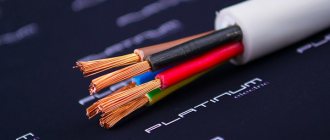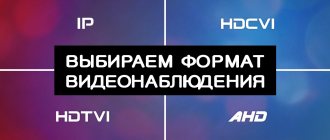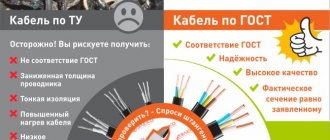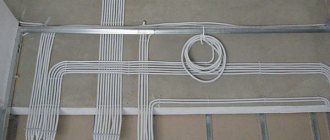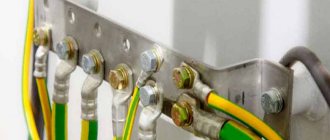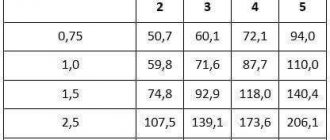The increase in the number of fires at industrial and civil facilities has led to the creation of a number of fire safety measures. The main document is Federal Law No. 123 of 2008. This regulation is supported by a number of technical standards, such as GOST R 53315-2009. This document classifies cable products and defines their use depending on their design. So, in facilities with high fire safety requirements, fire-resistant cable must be used in all electrical circuits. It is distinguished from other modifications by its design.
Scope of application
At industrial and civil facilities with increased requirements for fireproof safety cables, fire-resistant cable is used:
- in SOUE warning schemes;
- in security and fire alarm systems OPS;
- in automated fire extinguishing systems AUPT;
- in ventilation and other systems.
The principle approach is to ensure that the electrical network can support the safe evacuation of people within a specified time. The deadlines are set depending on the scale and layout of the building or structure.
Important! Fire resistance calculations and selection of materials must be carried out at the design stage. Here it is necessary to provide for all safety measures for people, the functioning of systems and equipment. The evacuation interval is taken as a constant, but it must be increased to account for unforeseen situations.
Manufacturers offer various types of fire-resistant cables
Which fire protection cable should you choose for your home?
In order to answer this question, you should learn to understand the characteristics of cables. Each heat-resistant cable and wire, regardless of its installation location, must comply with certain structural, technical and physical parameters:
Free from halogens (halogen-free)
This means that the cable was made from a material that does not contain chlorine, bromine or fluorine. This limits the risk of occupants being exposed to toxic gases from fires because the wires emit less smoke.
Application area
Before purchasing fire retardant wires, make sure that they can be:
- used in internal or external wiring of the house;
- can be laid in plaster or under plaster;
- can be installed in masonry and concrete;
- designed for use in damp areas;
- can be placed directly in water or ground.
Through this, we ensure that all home wiring, equipment, devices and systems are safe and functioning properly.
UV resistance
If you plan to install fireproof cables outside the building, it is important to check that they are resistant to the harmful effects of sunlight.
Working temperature
This indicator determines the minimum and maximum temperature at which the cable does not lose its properties and ensures proper operation of the wiring.
Electrical Requirements
They concern rated and test voltage. Among DC systems, cables with a rated voltage of U0 / U-0.6 / 1 kV and a test voltage of 1.8 kV can be used.
Protection against electric shock
This is an additional cable accessory that protects the user from electric shock. This is sometimes called yellow-green insulation because of the characteristic color.
Fire resistance
Measured in minutes. All fire-resistant wires and cables are classified into one of several categories based on how long they remain useful during a fire - 15, 20, 60, 90 or 120 minutes.
Design Features
A fire-resistant cable consists of several elements, each of which has its own characteristics:
- Veins. Wires of this type use copper conductors, the cross-section of which varies from 0.2 to 2.5 mm2.
- Insulation. It is this element that makes the cable fire resistant. Silicone rubber is usually used. Under the influence of fire, it turns into a shell of coke, which continues to perform its functions after the fire. The ceramic-forming material is resistant to mechanical stress and vibration.
- Twisting. The strands are twisted in pairs with a specific color identification. There can be many pairs.
- Screen. This is laminated aluminum foil. It is protection from extraneous electromagnetic waves, and, therefore, from false reactions. The screen is equipped with a contact conductor made of copper wire, which continues to maintain functionality even in the event of a foil break. It is laid from below. There are wires without shield, such as KnCHr (A)-FRHF.
- Shell. Mostly it is PVC with low smoke emission and gas formation characteristics. This is a standard cable element, it protects the wiring from mechanical damage.
This fire-resistant cable product can have any configuration: 1x2x0.5, 1x2x0.64, 1x2x0.75, 1x2x0.98, 2x1.5, 2x1.5, 3x1.5, 1x2x0, 2x2x0, 3x1 and others.
Standard Fire Resistant Electrical Wiring Design
On a note! For particularly critical facilities, for example, medical institutions, a special modification BPTHr(A)-FRLS has been developed. Its cores have a cross-section from 1.5 to 6.0 mm2. It can work for 3 hours at an alternating voltage of 660 V. This brand is used in fire extinguishing and fire ventilation systems.
How to make SAFE open wiring
Exposed electrical wiring in a wooden house does not always fit aesthetically into the interior, but it is still much safer and cheaper than hidden wiring. Let's look at the most popular laying methods.
Installation option in a special corrugated pipe
Corrugated installation
Installation is simple: the wire is pulled along a flexible corrugation made of non-flammable material. Several cables can be placed in one tube at once.
Due to the fact that the corrugated tube collects dust well and is not suitable for every interior, it is often used in utility rooms of the house or for outdoor installation. To ensure that the wiring does not stand out too much from the interior, you can choose a suitable color: red, black, gray or transparent. If necessary, you can even paint the corrugation.
The network must be planned so that the pipes do not intersect, because this violates the rules of the PUE and looks unaesthetic. Calculate and purchase installation accessories only after drawing up a complete wiring project.
To select the correct diameter of the corrugation, insert the wiring into it. In this case, the void should occupy half the volume, otherwise the cable will constantly get stuck during installation.
The corrugation is mounted on plastic clips, which are attached to the ceiling or walls with dowel nails and screws. The thicker the tube, the tighter the fasteners need to be placed. For example, with a diameter of 16 mm, clips should be located every 30-40 cm, and with a thickness of 32 mm or 40 mm - every 20-30 cm.
Before installation, mark with a pencil or chalk the places where the clips will be located. Then drill a hole, insert a dowel and attach the clip with a special nail or screw. The corrugation is installed by lightly pressing the tube onto the clip. To remove it, pull the tube towards you.
The corrugated pipe can also be mounted with metal brackets or self-tightening clamps. But it is better to use them only when quick installation is necessary. In addition, it is more difficult to tear the corrugation from the bracket.
A more aesthetic option is in a cable channel
Cable channel laid near the ceiling, with branches
The cable channel must be made of non-flammable plastic , otherwise in the event of a short circuit it will only spread the fire and increase the likelihood of a fire.
With open wiring, sections of the cable channel can be mounted at any angle. For example, to save materials, it can be laid diagonally on the wall. In addition, the cable channel is carried along the ceiling, and perpendicular sections are laid down from it, or vice versa - they are carried along the floor and the sections are thrown perpendicularly upward.
There are many options for choosing channels, since their design can be floor-mounted, ceiling-mounted or standard. In addition, you can choose any color. For a wooden house, stylized models made to look like oak or pine are suitable.
Before purchasing, you need to develop a detailed wiring project and calculate the number and set of accessories for installing the cable channel. Select its dimensions according to the number and cross-section of conductors. It is better to take the dimensions with a margin, because if there are too many wires, the lid will not close.
Most cable ducts have a partition. With its help, you can separate information and power lines. For example, if you lay an Internet cable together with a phase, the data transfer speed will drop due to the electromagnetic field of the power line.
Special angles are used for cable channel bends. You can make them yourself by simply cutting off part of the box. But wiring with complete accessories is faster to install and looks more beautiful.
The cable channel is screwed to wooden walls with ordinary screws. It is better to install from the entrance to the premises to the consumers. It is easier to branch the wiring in this sequence. First screw on the plastic case itself, and then pull the wire through it. The case is closed with a lid, which is inserted into the grooves and clamped until it clicks.
Even the cable can be laid “tastefully” - left open in a “retro” way
Retro style
This is the simplest electrical wiring, and it fits perfectly into the interior of a wooden house. For it, special “retro” wires are used - twisted in pairs or braided in threes. They have double insulation - the bottom layer is made of PVC, and the top layer is made of silk fabric impregnated with a non-flammable substance.
The wires are attached to special porcelain rollers mounted on wood screws. The distance between them should be 40-50 cm. Such wires are connected either by soldering or by Vago terminal blocks.
However, retro wiring has a number of disadvantages. First of all, the cable is much more expensive than a regular one and has a limited cross-section . For comparison: special non-flammable VVGng costs less than “retro” wire (for example, link to VVG cable in an electrical online store).
The largest retro section is 2.5 mm2. It can withstand loads up to 5 kW. For example, for a country house with electric heating this may not be enough.
To prevent a fire, you will need a wire of the correct cross-section. In addition, for wooden walls it is desirable that its insulation be made of non-combustible material.
Fire resistance as the main parameter
This characteristic is defined in the labeling by the designation FR. It shows the time during which the wiring remains operational at a certain fire temperature, type of gasket, operating voltage. The best indicator is marked PO1, which means that the wire will function for 3 hours. Watch fire-resistant cable tests in this video:
This parameter has another important characteristic - fire resistance limit. This is the period of time after which one of the signs of loss of performance appears, for example, a short circuit. Tests are carried out in accordance with GOST R IEC03. The fire is supplied from a gas burner, its temperature should be +750 degrees C. Electricity with a voltage of 300 V is supplied through a horizontally located fire-resistant cable. If the functionality is maintained for 180 minutes, the testing is considered successful.
Note! The term “non-flammable cable” is often used in everyday life. Mostly it denotes wiring that does not spread fire. Another term can refer to products with a fire-resistant, fire-resistant or heat-resistant shell. There are no completely non-flammable wires.
Testing of fire-resistant cable products
Fireproof (fire-resistant) cables and wires. Types and applications
Fire-resistant cables have been invented a long time ago. True, they began to be installed in private homes quite recently, only in the last 10-20 years. Basically, their scope of application was limited to hospitals, power plants, factories, office and commercial buildings, where there is always a large crowd of people and safety is paramount. We can also often find fireproof cables and wires in buildings where expensive electronic devices are installed: data centers and server rooms.
Therefore, when choosing a fire-resistant cable for your home, you should proceed from the purpose of the wire and the place where it will be used.
Cables for fire protection systems
Installation of fireproof cables is especially necessary in security and fire alarm systems, i.e. in circuits of alarm and warning devices, video surveillance, and smoke removal of buildings. Their main task is to ensure a continuous supply of electricity to fire-fighting devices.
Therefore, if you are looking for cables and wires for home fire protection systems, it is recommended to choose fire-resistant cables that are halogen-free (i.e., that do not contain chlorine, fluorine, or bromine). These chemicals are poisonous to the human body, and the fumes they release when a wire burns can cause poisoning, respiratory arrest, and even death.
Halogen-free fire-resistant cables for fire protection installations have the following features:
- prevent the spread of fire;
- characterized by low smoke emission;
- at high temperatures they emit non-aggressive and non-toxic gases.
Thanks to halogen-free fire-retardant wires, during a fire, better visibility is provided, which greatly facilitates the work of the fire department during fire and rescue operations.
These cables are also used in emergency lighting systems, control signals and other fire protection devices that have been planned to operate in the event of a fire. Their special design ensures proper operation in difficult thermal conditions.
If you are looking for a cable that will provide power to certain devices, such as sprinklers, during a fire, choose a heat-resistant power cable. When choosing a device, be sure to consider the type of rated voltage:
- low voltage - up to 1 kV;
- medium voltage - from 1 kV to 35 kV;
- high voltage - from 35 kV to 220 kV;
- the highest and ultra-high voltage - above 220 kV.
Heat-resistant power cable can be single-core or multi-core. They are marked with the letter K.
Heat-resistant control cables
To ensure uninterrupted operation in control circuits, automation systems, as well as in control, monitoring and protection devices during a fire, heat-resistant control cables will be useful.
They are produced using chemicals that make them fire resistant. Thanks to this, they do not spread fire and allow you to quickly and easily restore individual devices and systems to normal condition. In this way they protect accumulated assets and facilitate evacuation actions.
Firefighter telecommunication cable
In the case of fixed connections intended for telephone, station, transmission, industrial electronics, automation, data transmission in analogue and digital form, fire-rated telecommunication cables are suitable. They are used in various types of buildings with more stringent fire protection requirements.
Heat-resistant telecommunications cable is especially recommended for security alarm and fire extinguishing systems. It is worth paying attention to whether it is equipped with a common static screen. It protects the cable from interference from external electrical fields.
Fire retardant telecommunications cable does not contain fluorine, bromine and chlorine, which makes it difficult for fire to burn and spread to other wires in the wiring. Plus they are less toxic.
Telecommunication cables are divided into two models: stations - marked TKS and local - marked TKM. A special coating that does not spread flame is designated by the abbreviation Yn.
Smoke formation and gas emission during smoldering and combustion
This indicator is determined by the LS index. Tests are carried out in accordance with the GOST R IEC 61034-2 standard. A loss of light transmission of up to 50% is considered a positive result. Mainly attention is paid to halogens, namely fluorine and chlorine. These toxic substances spread indoors and, in the presence of water vapor, condense into hydrochloric acid. GOST R 53769-2010 sets the maximum permissible values at 140 mg/g. Special modifications with parameters up to 120 mg/g are being developed for kindergartens. Foreign manufacturers supply products that do not contain halogens.
Testing of fire-resistant cable for smoke and gas emission
Fireproof cable FRLS and FRHF: what is the difference?
Technical Director of Fire Protection Systems LLC. Electrical equipment. Fire safety requirements": "cable lines of fire protection systems must be made of fire-resistant cables with copper conductors that do not propagate flames when laid in groups according to category A according to GOST R IEC 60332-3-22 with low smoke and gas emissions (ng-LSFR) or not containing halogens (ng-HFFR)".
The preferred areas of application of cable products, taking into account their type of execution, are defined in GOST R 53315–2009 and GOST R 53769–2010.
Preferred area of application
According to GOST R 53315–2009 with amendment No. 1 “Cable products. Fire safety requirements”, a cable with the LS index is used “for laying, taking into account the volume of flammable load of cables, in internal electrical installations, as well as in buildings, structures and closed cable structures,” while a cable with the HF index is “for laying, with taking into account the volume of flammable load of cables, in internal electrical installations, as well as in buildings and structures with large numbers of people, including multifunctional high-rise buildings and building complexes.”
According to GOST R 53769–2010 “Power cables with plastic insulation for a rated voltage of 0.66; 1 and 3 kV. General technical conditions" the preferred areas of application of cables with insulation made of polymer compositions that do not contain halogens and with an outer sheath made of polymer compositions that do not contain halogens: "for cable power lines for electrical equipment of nuclear power plants, electrical wiring in office premises equipped with computer equipment and microprocessor technology, in kindergartens, schools, hospitals and for cable lines of entertainment complexes and sports facilities.”
Currently, in Europe, LS type cable is not produced due to its high corrosiveness and significant smoke emission during a fire, but a much less fire-hazardous halogen-free smokeless fire-resistant ng-FRHF cable is produced and used
Cable fire hazard class
According to GOST R 53315–2009 in the fire hazard class designation:
- the first indicator is the fire propagation limit (O1 or O2 for a cable product tested individually, or P1–P4 for a cable product tested during group installation);
- the second is the fire resistance limit;
- the third is an indicator of corrosion activity;
- fourth – toxicity indicator;
- the fifth is the smoke generation indicator.
The use of ng(A)-FRHF cable ensures not only a minimum emission of corrosive gases, but also significantly lower smoke emission compared to the ng(A)-FRLS cable.
Cable with fire resistance of at least 180 min. type ng(A)-FRLS has fire hazard class P1b.1.2.2.2, and cable type ng(A)-FRHF has fire hazard class P1b.1.1.2.1. Accordingly, the use of ng(A)-FRHF cable ensures not only a minimum emission of corrosive gases, but also significantly lower smoke emission compared to ng(A)-FRLS cable. Thus, for complete clarity, the ng(A)-FRHF cable should be called fire-resistant, halogen-free and smokeless, flame retardant when installed in groups.
Halogens, corrosivity and toxicity
In case of fire, a cable with the LS index emits halogens, which include chlorine and fluorine - toxic substances and energetic oxidizing agents that cause corrosion, which significantly narrows the scope of application of this cable. During a fire, the highly toxic hydrogen chloride gas released spreads throughout the facility and, when combined with water vapor, condenses on the equipment in the form of concentrated hydrochloric acid.
The permissible values of the corrosiveness of smoke and gas emission products during combustion and smoldering of insulation materials, sheath and protective hose of cables with the LS index and the HF index differ by 28 times according to GOST R 53769–2010! The amount of emitted gases of halogen acids in terms of HCl for polyvinyl chloride plastic compound of reduced fire hazard for cables of ng-LS and ng-FRLS versions should be no more than 140 mg/g, and for a polymer composition that does not contain halogens for cables of ng-HF and ng-FRHF versions , – no more than 5 mg/g.
In GOST R 53315–2009, there are no quantitative restrictions on the content of halogen acid gases in the requirements for cables with the LS index. For halogen-free cables with the HF index, GOST R 53315–2009 with amendment No. 1, in addition to the amount of gases emitted - in terms of HCl no more than 5 mg/g, the requirements for the conductivity of an aqueous solution with adsorbed smoke and gas emission products is no more than 10.0 µS/ mm and a pH value of at least 4.3. The same values are given as recommended when assessing test results in accordance with GOST R IEC 60754-2–99.
Moreover, foreign halogen-free fire-resistant cables provide significantly lower levels of corrosion activity compared to the permissible ones. For example, for FireKab FRHF, according to test results, the conductivity of an aqueous solution with adsorbed products was 4.8 μS/mm (allowed 10.0 μS/mm) and, accordingly, a practically neutral acid number pH = 6.2 (allowed pH no less than 4.3) .
Determination of the degree of acidity of released gases
The degree of acidity of gases released during combustion of cable compounds is determined according to GOST R IEC 60754-2–99 “Testing of cable construction materials during combustion. Determination of the degree of acidity of emitted gases by measuring pH and specific conductivity.” Samples of material with a total mass of (1000 ± 5) mg are burned in a sealed tube furnace at a temperature of at least 900 °C for 30 minutes. with a constant supply of air, the resulting gas-air mixture passes through one or two washing vessels with distilled water with a total volume of 1000 cubic meters. cm (Fig. 2).
In the absence of additional information, designers often choose ng(A)-FRLS cable, while most facilities should use ng(A)-FRHF cable
The pH value of the water should be 5–7, and the specific conductivity should be no more than 1.0 µS/mm. A magnetic stirrer is placed in the lower part of the vessel to ensure turbulent movement of water and better absorption of released gases. After completion of the tests, before determining the pH value and specific conductivity, the volume of liquid is adjusted to 1000 cubic meters. cm.
Smoke emission
In reality, LS type cable is quite smoky - when it burns, GOST R 53315–2009 allows for a reduction in light transmission of up to 50%, which significantly limits visibility.
For cable type HF, GOST R 53315–2009 allowed a reduction in light transmittance by a maximum of 25%, and in change No. 1 this value was increased to 40%, which corresponds to the recommendations of the international GOST R IEC 61034-2A, which is used to measure the density of smoke during combustion cables
Halogen-free FRHF is virtually smokeless. For example, FireKab FRHF cable, when tested to similar BS EN 61034-1-2/IEC61034-1-2 standards, showed a reduction in light transmittance of only 4%. In comparison, in similar tests, the ng-LS cable causes an 8 times greater reduction in light transmittance, approximately 30%, which significantly limits visibility, and the ng-type cable produces an even greater reduction in light transmittance, up to approximately 85%, which means a complete loss of visibility.
Cable smoke test
Measurement of smoke density during cable combustion is carried out according to the method defined by GOST R IEC 61034-2–2005 “Measurement of smoke density during cable combustion under specified conditions. Part 2. Test method and requirements for it,” and in the first part of GOST R IEC 61034-1–2005 testing equipment is defined.
The test chamber is in the form of a cube with internal side dimensions of (3000 ± 30) mm, with black matte walls, and has two transparent sealed windows on opposite sides measuring at least 100x100 mm, the centers of which must be located at a height of (2150 ± 100) mm to ensure the operation of the meter optical density of the medium (Fig. 3).
A tray measuring 240x140x80 mm with 1 liter of alcohol is installed in the test chamber, above which the cable sections are located. The fan, placed at a height of 200–300 mm, ensures uniform distribution of smoke throughout the chamber, and the air screen eliminates the impact of the air flow from the fan on the hearth.
For testing, several cable sections are taken, each 1 m long. The number of cable sections depends on the outer diameter of the cable. For example:
- for a cable with an outer diameter D of more than 10 and up to 20 mm inclusive, 3 pieces are taken;
- for a cable with an outer diameter D from 5 to 10 mm, the number of segments is determined as an integer from division 45/D;
- for a cable with an outer diameter D of less than 5 mm, but not less than 1 mm, seven bundles are formed from cable segments - the number of segments in each bundle must be equal to an integer from the division 45/3D (that is, 3 segments or more in each bundle).
Cable sections or bundles are laid in a horizontal plane in contact with each other at a height of (150 ± 5) mm from the bottom of the pallet (Fig. 4).
After fixing the test samples above the tray, turn on the fan and ignite the alcohol. During testing, the minimum value of light transmittance is recorded (Fig. 5).
The test is considered complete if there is no decrease in light transmission within 5 minutes. after the flame source has gone out or if the test duration has reached 40 minutes.
Fireproof choice
When choosing between an ng-FRLS cable and an ng-FRHF cable, it is necessary to take into account that the halogen-free ng-FRHF cable not only provides minimum values for the corrosiveness of smoke and gas emission products during combustion and smoldering of the insulation, but also has several times lower levels of smoke generation in terms of compared to a similar NG-FRLS cable.
In case of fire, a cable with the LS index emits halogens, which include chlorine and fluorine - toxic substances and energetic oxidizing agents that cause corrosion, which significantly narrows the scope of application of this cable
Such advantages of the halogen-free ng-FRHF cable determine the need for its use in buildings and structures with large numbers of people, including multifunctional buildings-complexes and high-rise buildings, as well as in office premises equipped with computer and microprocessor equipment, in kindergartens, schools, hospitals, entertainment complexes and sports facilities.
A cable with the LS index can be considered to have low smoke and gas emissions only in comparison with an NG cable, but it is significantly worse in this parameter compared to a halogen-free cable with the HF index.
In conclusion, it should be noted that currently in Europe the LS type cable is not produced due to its high corrosiveness and significant smoke emission during a fire, but a much less fire-hazardous halogen-free smokeless fire-resistant NG-FRHF cable is produced and used.
Published: Security Systems Magazine #1, 2012
Three types of fire resistant cables
Today there are three types of fire-resistant cable products on the market:
- Wires with magnesium insulation. They have a metal shell and may contain one or many veins. The space of the tubes is filled with Mg magnesium oxide. High fire safety is achieved by the absence of substances that decompose due to high temperatures and combustion. These products emit minimal amounts of smoke and gas.
- Wiring with glass mica insulating material. That is, they are armored with mica-containing glass tapes, which are wrapped around the conductive wires. Polymer insulation and PVC are laid on top of the tapes. These modifications stably withstand fire at a temperature of +750 degrees C for 3 hours. With high fire resistance, they are protected from mechanical stress.
- Wires insulated with ceramic rubber. This group has the same fire protection parameters as the previous one, but using a different technology. This modification is characterized by good resistance to mechanical stress, low smoke and gas emission indices, resistance to short circuits, and the ability to operate without channels and ducts. VVGNG-FRLS belongs to this group.
Ceramic rubber insulated cable
Types of non-flammable and fire-resistant cables
According to GOST 53315-2009, there are several types of non-flammable and fire-resistant fire-resistant cables:
- flame retardant when installed alone;
- flame retardant when laid in groups (- ng);
- flame retardant when laid in groups, with reduced smoke and gas emissions (-ng-LS);
- do not propagate fire when laid in groups and do not emit corrosive gaseous products during combustion and smoldering (-ng-HF);
- fire-resistant, flame retardant when laid in groups, with reduced smoke and gas emissions (-ng-FRLS);
- do not propagate fire during group installation and do not emit corrosive gaseous products during combustion and smoldering (- ng-FRHF);
- flame retardant when laid in groups, with reduced smoke and gas emissions and low toxicity of combustion products (- ng-LSLTx);
- non-flammable when laid in groups, not emitting corrosive gaseous products during combustion and smoldering and with low toxicity of combustion products (- ng-HFLTx);
- flame retardant when laid in groups, with reduced smoke and gas emissions and low toxicity of combustion products (- ng-FRLSLTx;)
- non-flammable when laid in groups, not emitting corrosive gaseous products during combustion and smoldering and with low toxicity of combustion products (-ng-FRHFLTx);
Method of laying and operating conditions of fire-resistant wiring
In addition to direct fireproof characteristics, when choosing, you need to take into account the climatic conditions for which the fire-resistant cable is designed: cold, temperate, tropical. The accompanying documents indicate the installation method: indoors or outdoors, the possibility of open placement or through cable channels. Electrical lines cannot always be laid straight; many industrial and civil installations will require numerous bends. This factor also needs to be taken into account when purchasing. For example, fire-resistant PVKV cable can be laid with turns, even at sharp angles. This modification perfectly withstands pressure changes, including sudden ones.
International marking
According to international standards, the manufacturer of fire-resistant cable products must include the following information in the certificate:
- degree of fire resistance;
- ability to spread fire;
- volumes of gas formation, specific conductivity of gases and their pH;
- smoke density indicators when testing a sample under specified conditions;
- volumes of halogen-containing gases during smoldering and combustion.
The following abbreviations are accepted in the international system:
- SID - solid 1-component core;
- SIZ – flexible non-flammable cable;
- SIF – wire with thin cores;
- SIFF – modification with super-thin conductors;
- GL – fiberglass heat-resistant braid.
Russian cable products
The Russian market mainly offers products from domestic enterprises, which have their own designations:
- KShM or KShSE – for connecting control and measuring equipment;
- KPS or KPSE – components for warning and fire extinguishing structures;
- KUNRS – for fire protection circuit blocks;
- KSBG – for industrial facilities;
- KSB for connecting automation to equipment and systems;
- PVKV – silicone wires for switching equipment;
- RKGM is a flexible cable without armor.
Russian markings
Electrical wiring in baths and saunas
In baths and saunas, you need to approach the choice of cable products responsibly, since the premises have critical conditions for electrical networks: the temperature is close to +190 degrees C, and the humidity often exceeds 90%. A wrong decision will cause electric shock to people. In the locker room and dressing room it is permissible to install ordinary wires, but in the steam room only special heat-resistant modifications can be used, taking into account the material of the walls. These can be RKGM, PVKV, PRKA, PMTK and their analogues. It is important to take into account not only the temperature and humidity conditions, but also the laying pattern. You should not discount lighting equipment: lamps, sockets and switches.
Heat-resistant wires for saunas and baths
PRODUCT APPLICATION
Despite the specificity of the products of NPF KB-ENERGO-PROJECT LLC, the scope of application of heat-resistant cables turned out to be significantly wider than we expected. Initially, the cable was developed for the needs of metallurgical production, but harsh temperature conditions are present in many industries.
Glass production, wood drying, oil distillation column, bread baking, cement and asphalt production, rubber vulcanization, application of polymer and rubber insulation on wires and cables, fire alarm and ventilation systems - this is not a complete list of “hot” areas of modern industry and in all wires and cables from NPF KB-ENERGO-PROJECT LLC are already operating in these areas.
Let's summarize
When choosing cable products, you should carefully study their technical parameters, since this is not only an opportunity to pass fire inspections without any questions, but a measure of social responsibility for people’s lives. It is important to accurately identify brands, check for a certificate, and test them in specialized licensed laboratories. And provide for unforeseen situations. Work on project development, selection of components, and installation should be trusted only to professionals who will carry out the work competently and provide them with guarantees.
